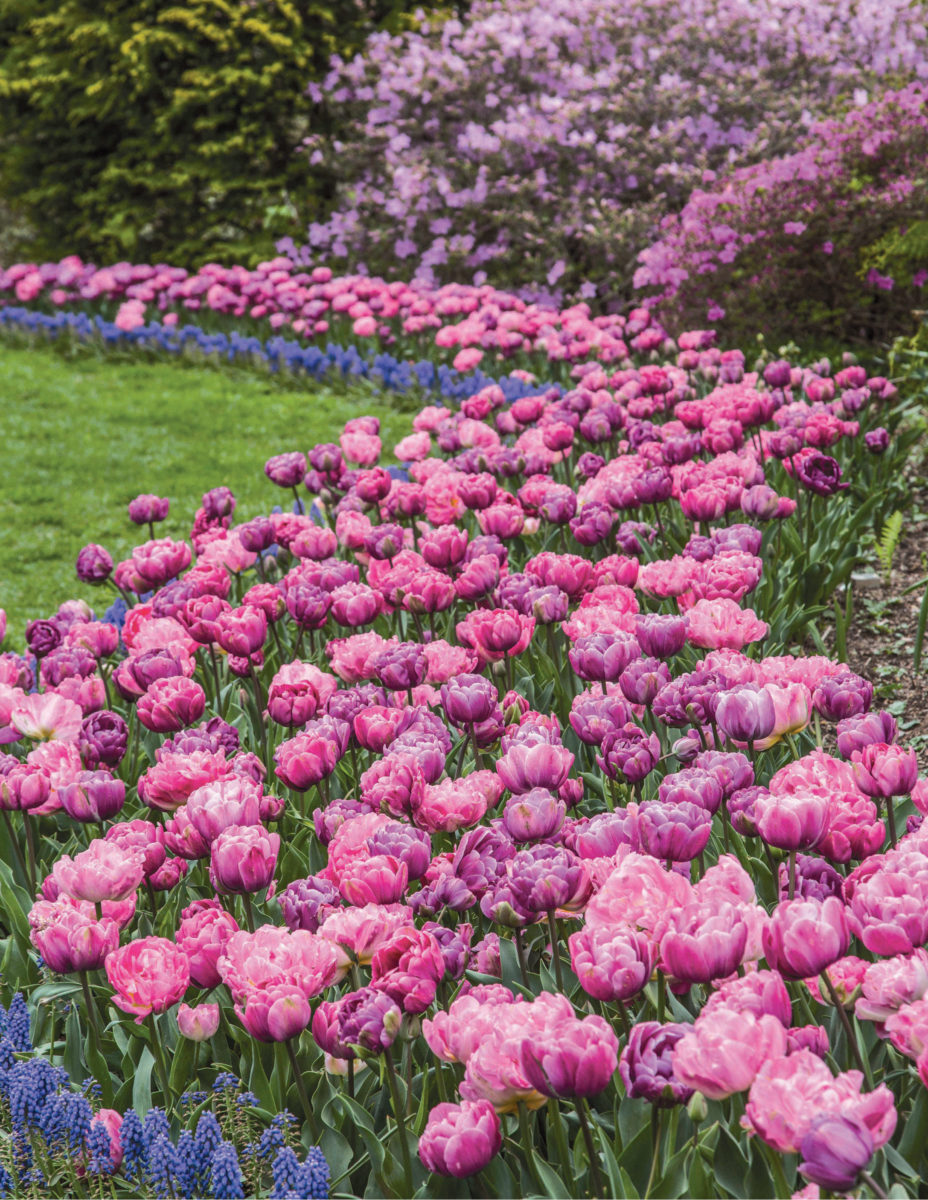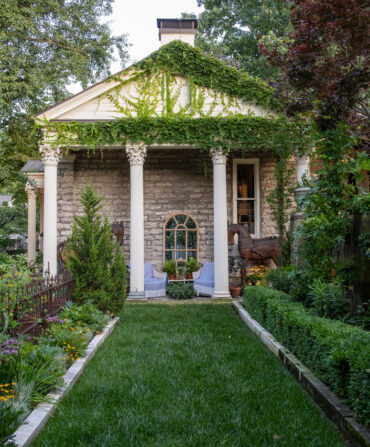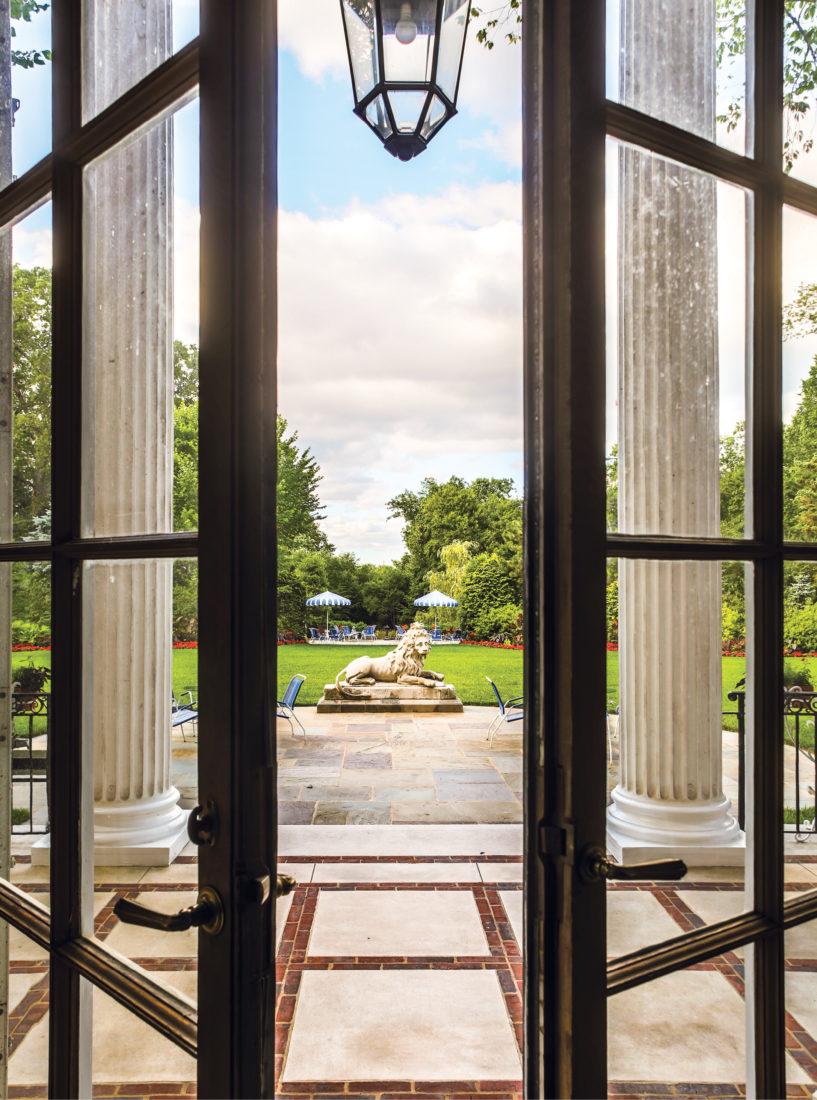
“Hillwood has twenty-five acres, thirteen of which are manicured gardens,” Markert says. “We’re one of the great gardens in the U.S. as well, so it has been a wonderful combination of my professional career, which was in art museums, and, of course, I’m an avid gardener myself. It’s been a dream job.”
Photo: Erik Kvalsvik
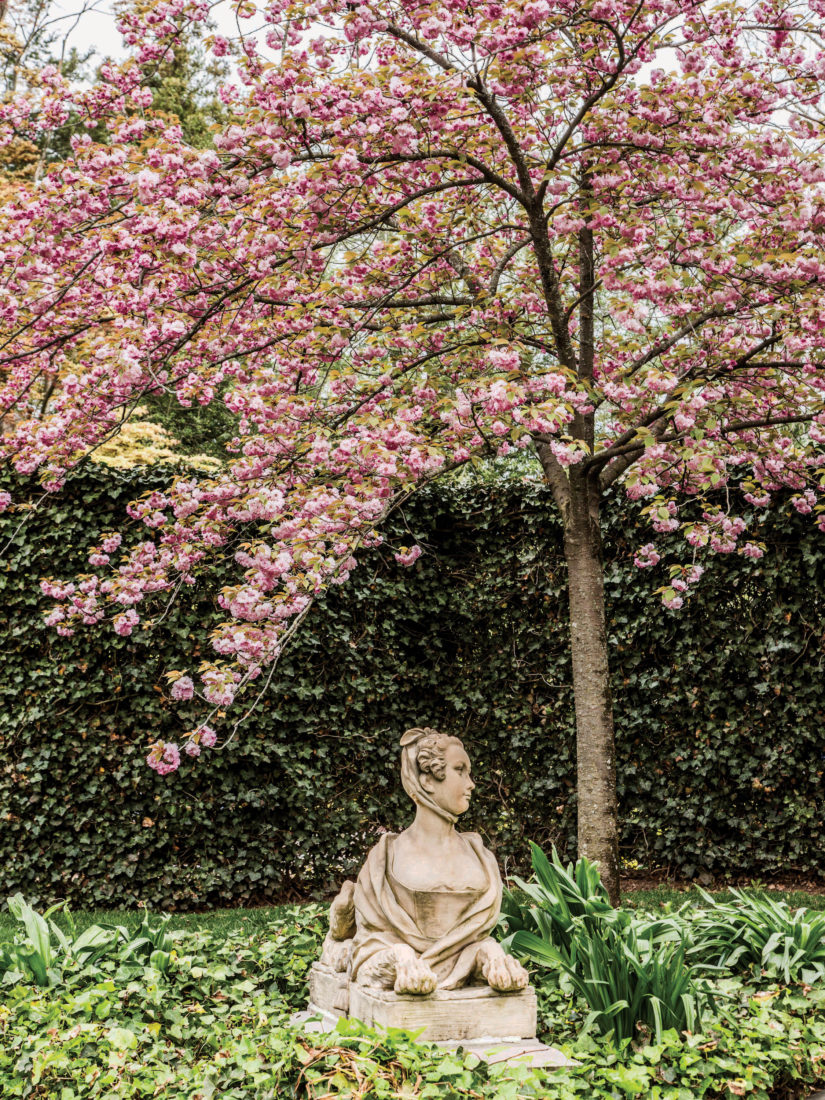
Just outside of the French parterre sit a number French statues, like this one of the Sphinx. “You have all of these eighteenth-, nineteenth-century sculptures that create the whole mood of this pleasure garden,” Markert says.
Photo: Erik Kvalsvik
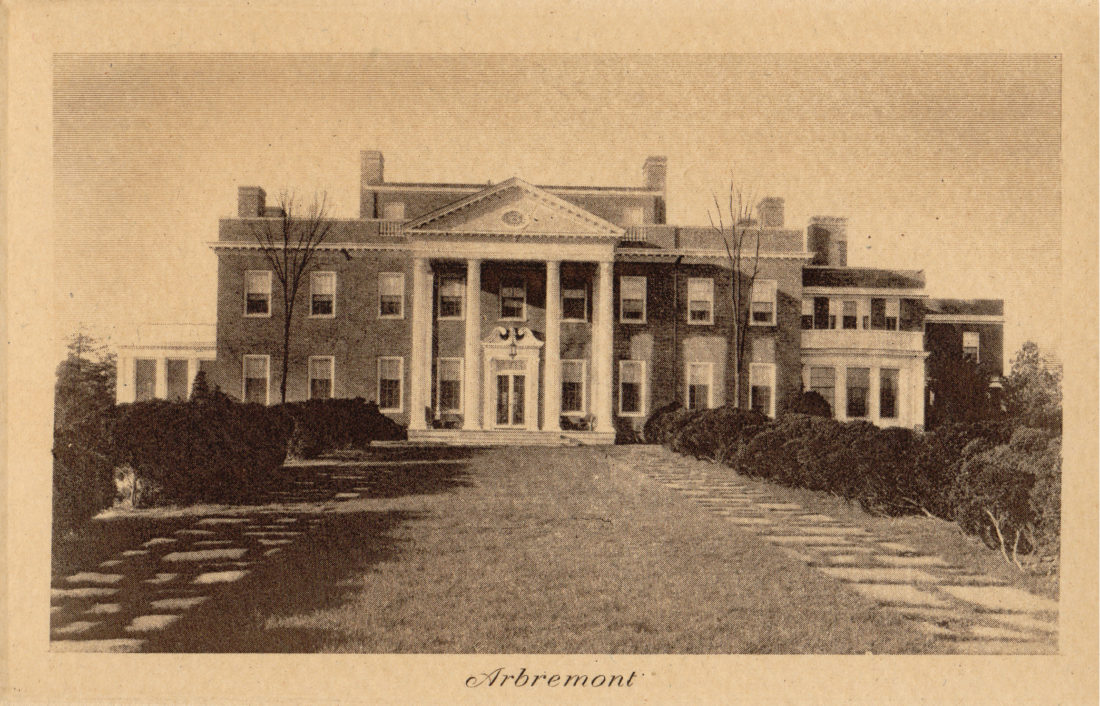
This 1926 photograph of the estate bears the name Arbremont, meaning “wooded hill.” Post’s daughters wanted to pay homage to the former name by dubbing the estate “Hillwood.” Later, in the 1950s, Post worked with the prominent landscape architects Umberto Innocenti and Richard Webel to develop Hillwood into the oasis it is today.
Photo: Image via Erik Kvalsvik
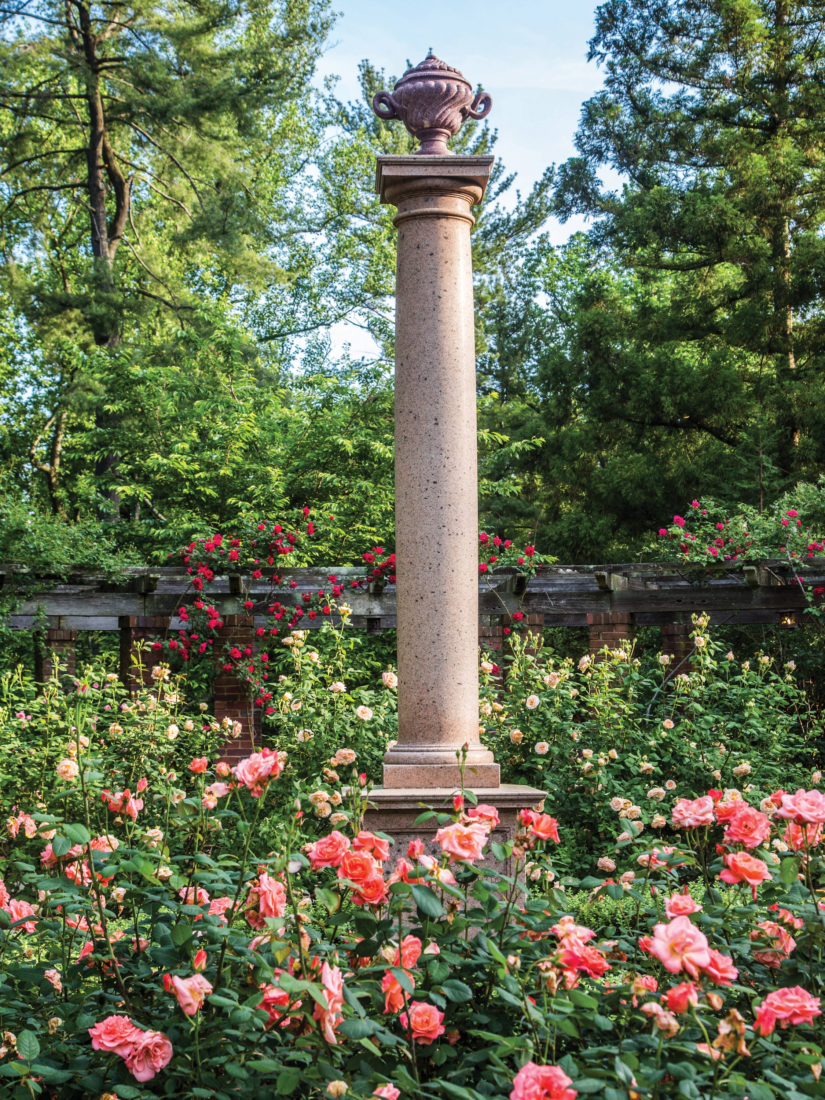
Post designed the original grounds of the estate so that, no matter the time of year, she could look out any window and see flowers. That tradition lives on today. This obelisk, shrouded in floribunda roses at the center of the rose garden, marks Post’s final resting place among the flowers she loved so dearly.
Photo: Erik Kvalsvik
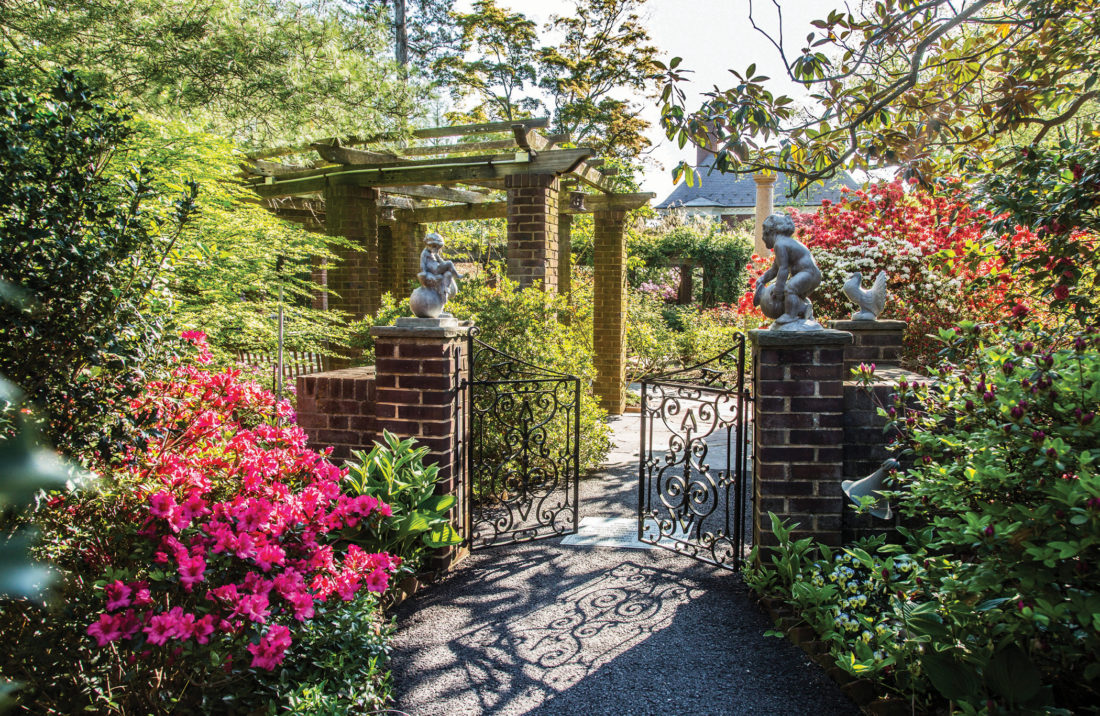
“This is truly one of my favorite parts,” Markert says. “There are lots of pathways throughout the estate where you can see azaleas. It’s just breathtaking, because you’re walking through clouds of color.”
Photo: Erik Kvalsvik
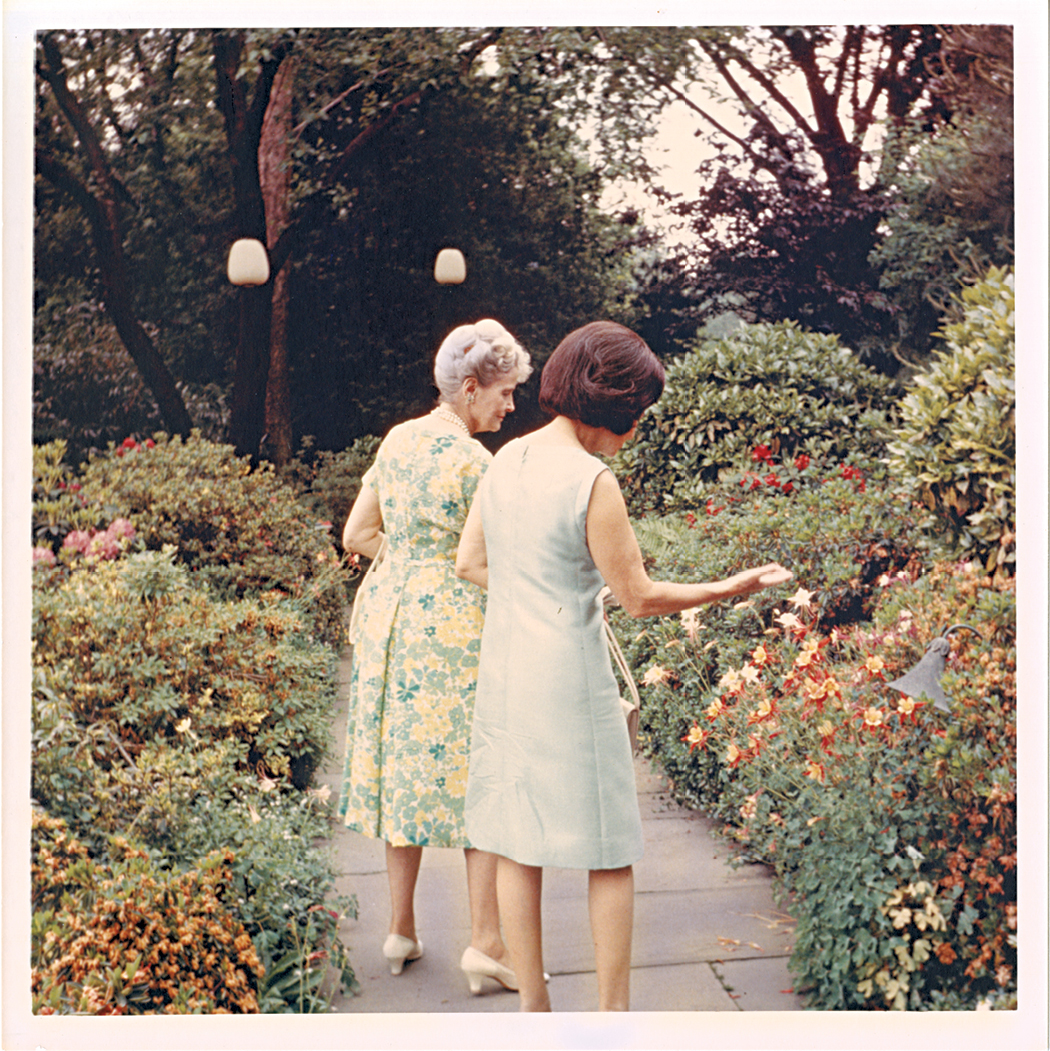
This 1966 photograph follows Post (left) as she guides Lady Bird Johnson, the First Lady and wife of President Lyndon B. Johnson, through her gardens. Post, Markert says, “wasn’t the kind of person who was actually out there digging in the dirt. That was not who she was. But she was very specific.” She took pride in attending to every aspect of the sweeping gardens.
Photo: Image via Rizzoli USA
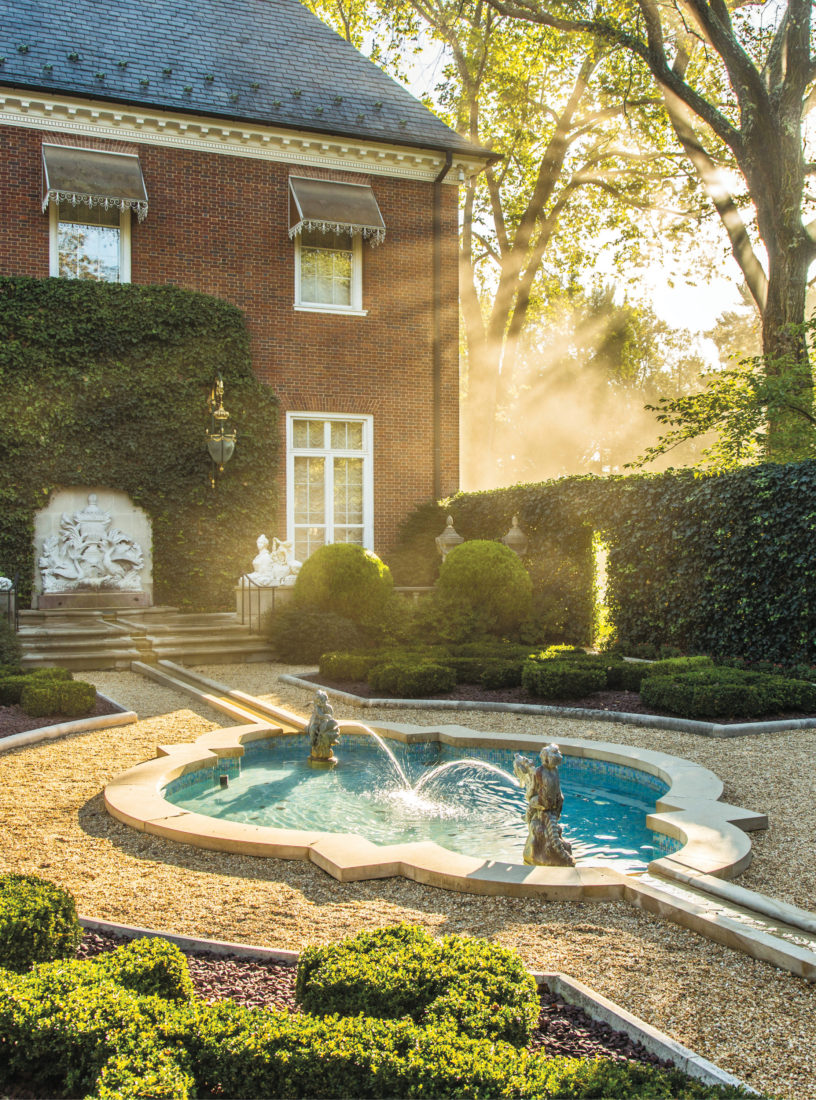
Markert had the photographer Erik Kvalsvik visit the grounds multiple times over a two year period in order to capture a wide array of lighting and seasonal changes for the book. “I wanted to be sure that we got photographs of Hillwood in every mood,” Markert says.
Photo: Erik Kvalsvik

Presided over by Leo, a regal eighteenth-century stone lion, the Lunar Lawn served as a reception area for Post’s philanthropic work, as well as a gathering ground for many of the political and social elite.
Photo: Erik Kvalsvik
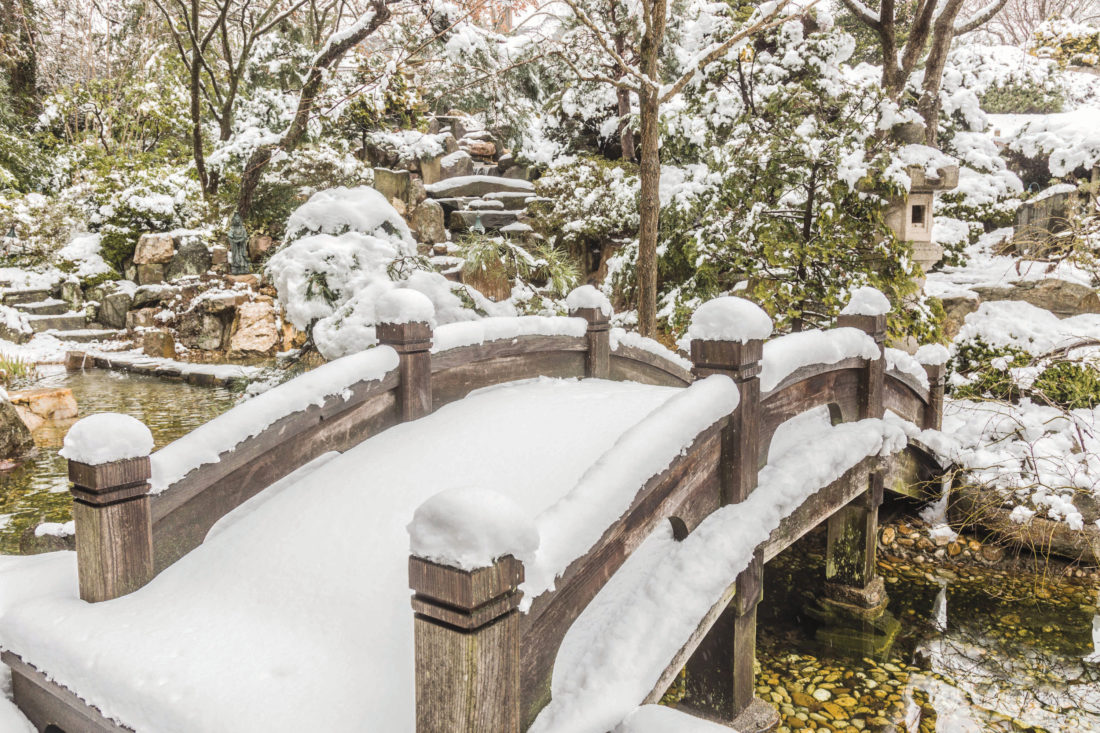
While the Hillwood Estate’s gardens are best known for their springtime splendor, Markert says the winter holds its own unique beauty. “You can really see the bones of the garden.”
Photo: Erik Kvalsvik
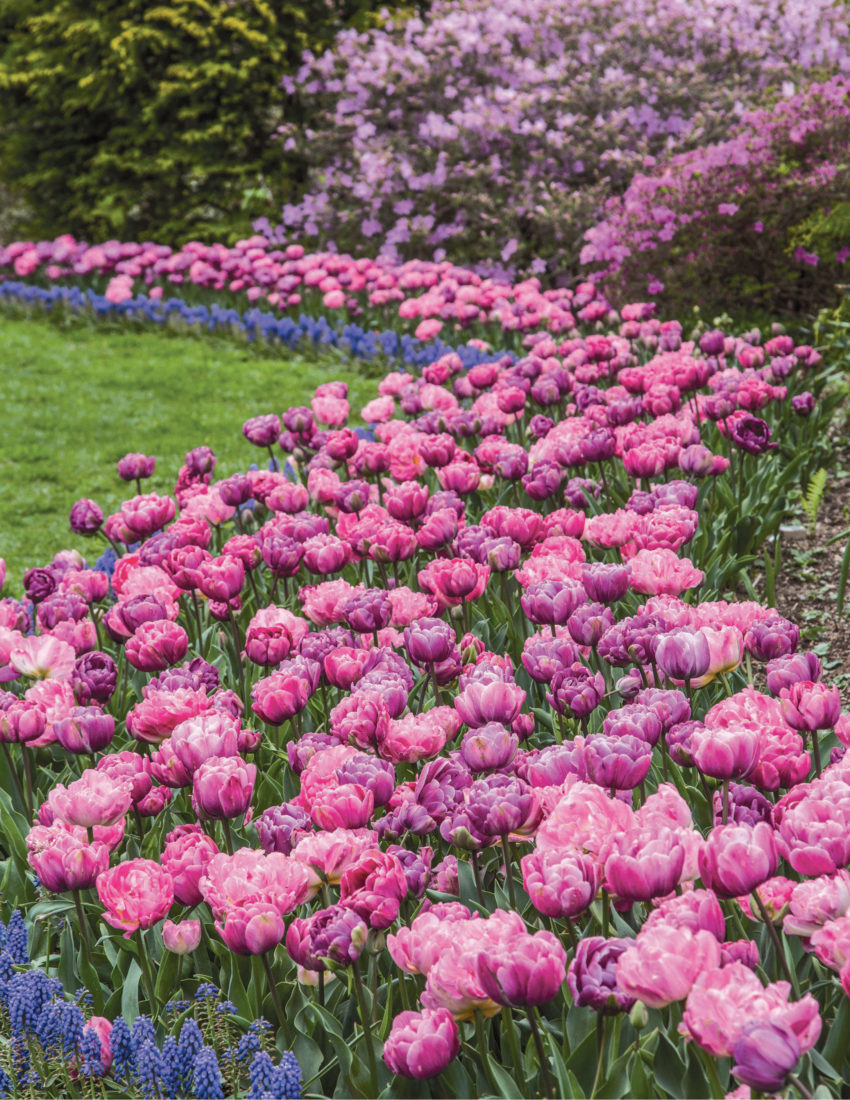
The Hillwood Estate rings in the spring with swaths of tulips in shades of pink and purple. “There are bulbs in the spring, as she always had in the Lunar Lawn,” Markert says, “then annuals in the summer and chrysanthemums in the fall. We try to have the whole campus have the same kind of feel that it had when Marjorie Post was alive.”
Photo: Erik Kvalsvik


